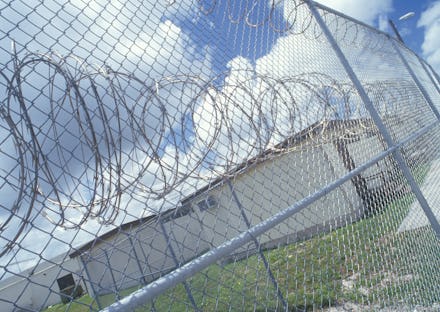19 Actual Statistics About America's Prison System

The U.S. imprisons a larger percentage of its black population than South Africa did at the height of apartheid. There is a reason for it — but not a good one.
Michelle Alexander is a civil rights lawyer, advocate, legal scholar and author of the highly acclaimed 2010 book The New Jim Crow: Mass Incarceration in the Age of Colorblindness. The book is an impressive work of nonfiction in which Alexander disproves common misconceptions about criminal justice in the United States and paints an appalling picture of where the system stands today.
Alexander builds a compelling case through her thorough research: "We have not ended racial caste in America; we have merely redesigned it." She swiftly awakens her readers to the harsh reality that they may not have realized they were living in. Public intellectual Cornel West wrote in the book's foreword that it is a "grand wake-up call in the midst of a long slumber of indifference to the poor and vulnerable."
The predicament of mass incarceration is, in Alexander's words, "a human rights nightmare." Sadly, she is not exaggerating — the facts are startling. And our politicians are dropping the ball. Below is a mere snapshot.
(Image Credit: The Sentencing Project)
1. The United States has 5% of the world's population, but 25% of the world's prisoners.
2. The total incarcerated population in the U.S. is a staggering 2.4 million — a 500% increase over the past 30 years.
3. One in every 108 adults was in prison or jail in 2012.
4. One in 28 American children has a parent behind bars.
5. At the end of 2007, 1 in 31 adults was behind bars, on probation or on parole.
6. Currently, 65 million Americans have a criminal record.
7. There are more people behind bars today for a drug offense than there were in 1980 for all offenses combined.
8. The U.S. spent $80 billion on incarceration in 2010 alone.
9. About as many people were returned to prison just for parole violations in 2000 as were admitted in 1980 for all reasons combined.
10. Parole violators accounted for more than 35% of all prison admissions in 2000. Of those, only one-third were returned for a new conviction; the rest were returned for a technical violation, such as missing a meeting with the parole officer.
11. A first-time drug offense carries a sentence of 5-10 years. In other developed countries, that sentence would be six months of jail time, if any at all.
12. The vast majority of those arrested with a drug offense are not charged with serious offenses. For example, in 2005, 4 out of 5 drug arrests were for possession, not sales.
13. In the 1990s, marijuana possession accounted for nearly 80% of the spike in arrests.
14. Three out of four young black men in Washington, D.C., can expect to serve time behind bars. This is despite the fact that people of all races use and sell drugs at the same rate.
15. African-Americans comprised 12% of regular drug users, but almost 40% of those arrested for drug offenses.
16. More than 96% of convictions in the federal system result from guilty pleas rather than decisions by juries.
17. Conservative estimates put innocent people who plead guilty between 2% and 5%, which translates to tens of thousands of innocent people behind bars today.
18. Eighty percent of defendants cannot afford a lawyer. Tens of thousands of people go to jail every year without ever talking to a lawyer or going to trial.
19. A public defender will routinely have a caseload of more than 100 clients at a time.